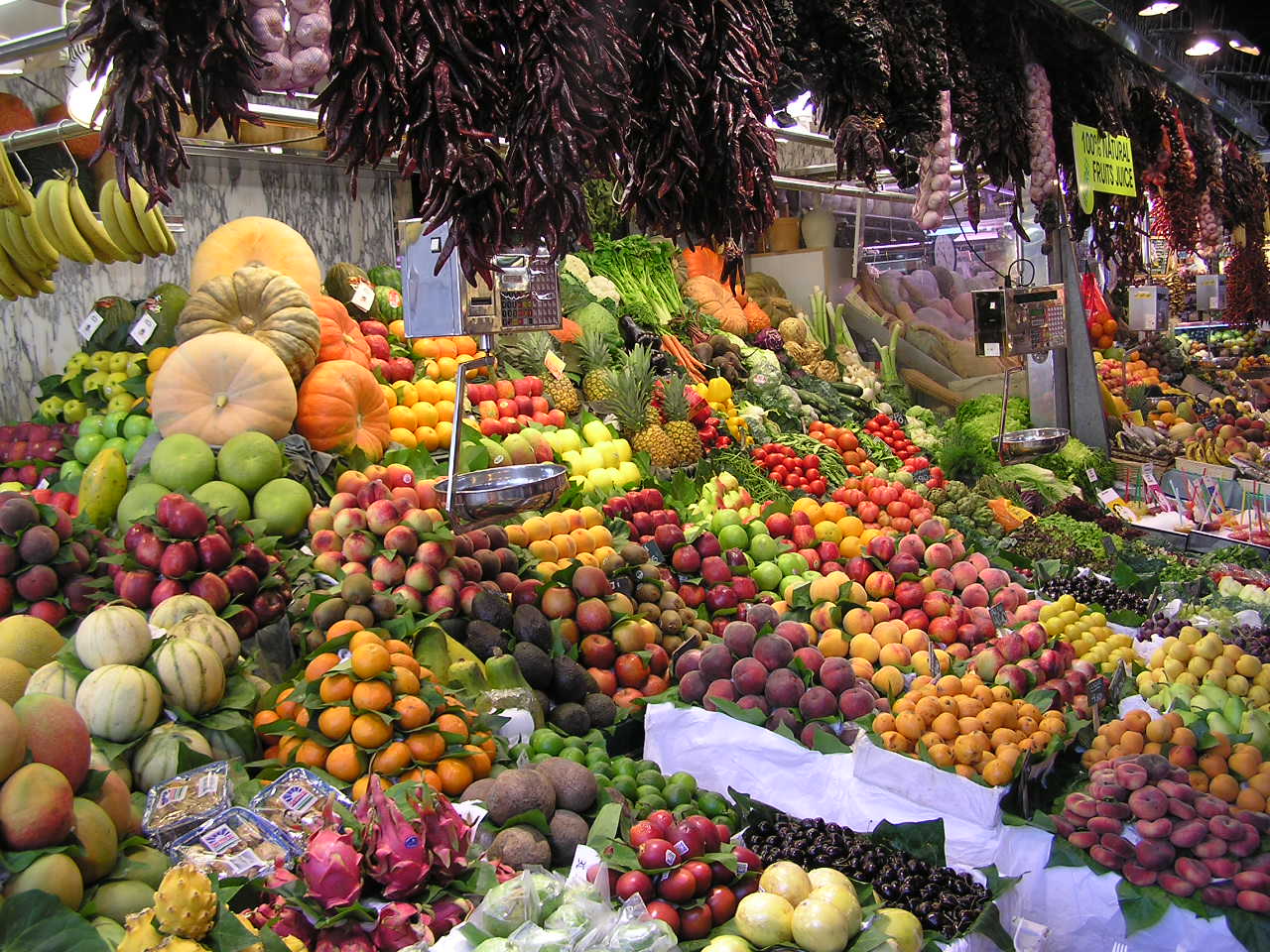Produce on:
[Wikipedia]
[Google]
[Amazon]
 In
In
File:Korea-Andong-Gohari-Harvesting onions-02.jpg, alt=Farmworker puts onions into large mesh bags, Produce may be bagged in the field during harvest.
File:Onion box - CO2v01-22421314.jpg, Produce may be packaged for transport in a plastic crate.
File:Gemüse auf einem Markt in Gallicano 01.jpg, Cardboard boxes for bulk produce
File:Leno bag sample filled.png, Mesh bag used for retail sales
File:Spring Onion.jpg, Small amounts may be banded together.
File:Sweet onions in a pile.jpg, Bulk produce may be identified by stickers
''Farm & Garden Produce: A Treasury of Information.''
G. Routledge & Co. OCLC Number: 39049007
Microbial Safety of Fresh Produce - Google Books
The Produce Contamination Problem: Causes and Solutions - Google Books
Produce Degradation: Pathways and Prevention - Google Books
Decontamination of Fresh and Minimally Processed Produce - Google Books
Microbiology of Fresh Produce - Google Books
Slow food: A Passion for Produce - Google Books
Melissa's Everyday Cooking with Organic Produce - Google Books
Procurement and Marketing of Minor Forest Produce in Tribal Areas - Google Books
Public Produce: The New Urban Agriculture - Google Books
Global standard for food safety: guideline for category 5 fresh produce (North American version) - Google Books
American English
American English, sometimes called United States English or U.S. English, is the set of variety (linguistics), varieties of the English language native to the United States. English is the Languages of the United States, most widely spoken lang ...
, produce generally refers to fresh fruits
In botany, a fruit is the seed-bearing structure in flowering plants (angiosperms) that is formed from the ovary after flowering.
Fruits are the means by which angiosperms disseminate their seeds. Edible fruits in particular have long propaga ...
and vegetables
Vegetables are edible parts of plants that are consumed by humans or other animals as food. This original meaning is still commonly used, and is applied to plants collectively to refer to all edible plant matter, including flowers, fruits, ...
intended to be eaten by humans, although other food
Food is any substance consumed by an organism for Nutrient, nutritional support. Food is usually of plant, animal, or Fungus, fungal origin and contains essential nutrients such as carbohydrates, fats, protein (nutrient), proteins, vitamins, ...
products such as dairy products
Dairy products or milk products are food products made from (or containing) milk. The most common dairy animals are cow, water buffalo, goat, nanny goat, and Sheep, ewe. Dairy products include common grocery store food around the world such as y ...
or nuts are sometimes included.
In supermarket
A supermarket is a self-service Retail#Types of outlets, shop offering a wide variety of food, Drink, beverages and Household goods, household products, organized into sections. Strictly speaking, a supermarket is larger and has a wider selecti ...
s, the term is also used to refer to the section of the store where fruit and vegetables are kept. ''Produce'' is the main product sold by greengrocers (UK, Australia) and farmers' markets. The term is widely and commonly used in the U.S. and Canada, but is not typically used outside the agricultural sector in other English-speaking countries
The English-speaking world comprises the 88 countries and territories in which English is an official, administrative, or cultural language. In the early 2000s, between one and two billion people spoke English, making it the largest language ...
.
Packaging
Produce may be packaged for transport or sale. In parts of the world, including the U.S. and Europe, loose pieces of produce, such as apples, may be individually marked with small stickers bearing price look-up codes. These four- or five- digit codes are astandardized
Standardization (American English) or standardisation (British English) is the process of implementing and developing technical standards based on the consensus of different parties that include firms, users, interest groups, standards organiza ...
system intended to aid checkout and inventory control at places where produce is sold.
Bacterial contamination
Raw sprouts are among the produce most at risk of bacterial infection. Rinsing is an effective way to reduce the bacteria count on produce, reducing it to about 10 percent of its previous level. Wastewater used on vegetables can be a source of contamination, due to contamination with fecal matter, salmonella or other bacteria. After Denmark eliminated salmonella in its chickens, attention has turned to vegetables as a source of illness due to feces contamination from other animal sources, such as pigs.See also
*Food industry
The food industry is a complex, global network of diverse businesses that supplies most of the food consumed by the world's population. The food industry today has become highly diversified, with manufacturing ranging from small, traditional, ...
* Food labeling regulations
* Food traceability
* Geography of food
* Produce traceability
Notable people
* Frieda Rapoport Caplan *James Dole
James Drummond Dole (September 27, 1877 – May 20, 1958), the "Pineapple King", was an American industrialist who developed the pineapple industry in Hawaii. He established the Hawaiian Pineapple Company (HAPCO) which was later reorganized to ...
References
Further reading
* Doyle, Martin (1857)''Farm & Garden Produce: A Treasury of Information.''
G. Routledge & Co. OCLC Number: 39049007
Microbial Safety of Fresh Produce - Google Books
The Produce Contamination Problem: Causes and Solutions - Google Books
Produce Degradation: Pathways and Prevention - Google Books
Decontamination of Fresh and Minimally Processed Produce - Google Books
Microbiology of Fresh Produce - Google Books
Slow food: A Passion for Produce - Google Books
Melissa's Everyday Cooking with Organic Produce - Google Books
Procurement and Marketing of Minor Forest Produce in Tribal Areas - Google Books
Public Produce: The New Urban Agriculture - Google Books
Global standard for food safety: guideline for category 5 fresh produce (North American version) - Google Books
External links
{{Authority control Crops Food retailing Edible fruits Vegetables